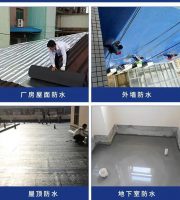After grooving, it is put aside for a long time, the reinforcement cage is not lifted in time, and the concrete is poured, so the slurry precipitation loses the function of wall protection.
It contains a lot of salt and mud sand, which is easy to precipitate, so that the properties of the slurry change and can not play the role of wall protection.
If the deviation is serious, backfill the clay to more than 1m above the deviation, and re drill after the deposition is dense.
The definition of diaphragm wall the excavation technology of diaphragm wall originated in Europe.
directly into the tank; The water quality used shall meet the requirements.
When the reinforcement cage floats upward, an anchor point can be set on the guide wall to fix the reinforcement cage, remove the sediment at the groove bottom, speed up the pouring speed, and control the maximum buried depth of the conduit not to exceed 6m.
In case of the junction of soft and hard soil layers, low-speed trenching shall be adopted, the excavation sequence shall be reasonably arranged, and the excavation speed shall be properly controlled.
Hard soil layer is encountered during grooving.
The mud preparation and quality do not meet the requirements.
Encounter soft soil layer or quicksand layer with developed vertical bedding.
The pouring interval is too long.
2.
For grooving in soft sand layer, the footage shall be controlled and not too fast; After the groove section is grooved, the reinforcement cage shall be placed and the concrete shall be poured, so as not to put it aside for too long as possible; Adjust the mud density and liquid level elevation at any time according to the grooving condition; Generally, the unit trench section shall not exceed 6m, and attention shall be paid not to excessive ground load; Speed up the construction progress, shorten the trenching time and concrete pouring interval, reduce the groundwater level, and reduce the impact and high-pressure water flow scouring.
7.
It is developed according to the method of drilling and oil drilling, using mud and underwater concrete.
There is no support inside the guide wall.
3.
The distance between the conduit bottom and the groove bottom is too large.
The tremie is buried too deep or the concrete pouring speed is too slow, and the reinforcement cage is lifted and floated.
Preventive measures and treatment methods: the distance between the conduit mouth and the groove bottom shall not be less than 1.5D; The concrete water isolating plug shall have a gap of 5mm larger than the inner diameter of the conduit; Select the concrete mix proportion as required, strengthen the operation control and maintain continuous pouring; The tremie shall be lifted up and down slightly during the pouring interval.
5.
The water quality of the slurry is not up to the requirements.
Causes: 1.
4.
9.
3.
Characteristics of this method 1.
⑦ The joint pipe cannot be pulled out of the lock pipe at the joint of underground concrete diaphragm wall, and cannot be pulled out after concrete pouring..
When digging a trench in the soft sand layer, the footage is too fast, or the rotary speed of the drilling rig is too fast, and the idle time is too long, which will disturb the trench wall.
3.
Insufficient strength and stiffness of guide wall.
When the groove wall is grooved, the reinforcement cage is lowered and the concrete is poured, the local holes in the groove section collapse, resulting in sudden drop of water level, fine blisters from the orifice, increase of excavated volume without footage, significant increase of drilling rig load, etc.
④ The reinforcement cage is difficult to put into the slot hole or float up.
It is strictly prohibited to pour bentonite, caustic soda, etc.
Treatment: the blocked pipe can be knocked, shaken, vibrated or lifted, or the concrete in the pipe can be dredged by tamping with a long rod; If it is invalid, when the top layer concrete has not been initially set, the tremie shall be lifted out and re inserted into the concrete, and the mud in the tremie shall be discharged with an air mud suction machine, and then the concrete shall be poured and tamped again.
4.
Insufficient quantity of initial pouring concrete.
5.
The distance between the tremie opening and the groove bottom is too small or inserted into the mud and sand at the groove bottom.
4.
The groundwater level is too high, the mud level elevation is not enough, or the water pressure in the hole reduces the hydrostatic pressure.
Preventive measures and measures: adjusting the suspending device before the use of the trench machine, preventing the eccentricity, keeping the frame base level and setting it smoothly.
2.
The interval between placing reinforcement cage and pouring concrete is too long, the groundwater level is too high, and the groove wall is scoured.
The concrete slump is too small, the stone particle size is too large, and the sand rate is too small.
3.
Due to slurry leakage or careless construction operation, the slurry level in the tank decreases beyond the safe range, or the underground water level rises sharply due to rain.
Grooving at inclined soft and hard strata.
2.
Causes: 1.
The depth of the tremie inserted into the concrete is insufficient.
3.
The foundation collapses or is scoured.
The flexible suspension device of the grooving machine is eccentric, and the grab is not placed horizontally.
The unit slot section is too long, or the additional load on the ground is too large.
When entering the groove, the grab swings and deviates from the direction.
4.
It is applicable to the construction of basement, underground shopping mall, parking lot, underground oil depot, retaining wall, deep foundation of high-rise buildings, reverse construction enclosure structure, and deep pool and pit of industrial buildings; Shaft, etc.
After the groove is cleaned, the reinforcement cage is hoisted in the groove, and then the underwater concrete is poured by conduit method to form a unit groove section.
4.
The water isolating plug is stuck in the conduit.
2.
Common problems and causes: ① causes of guide wall damage or deformation: 1.
② The groove wall collapses.
⑤ Causes of mud entering into tremie during concrete pouring: 1.
2.
a) The size of reinforcement cage is inaccurate, and bending occurs at the longitudinal joint.
Treatment: if the reinforcement cage cannot be placed due to the bending of the groove wall, it shall be repaired and then placed in the reinforcement cage.
10.
Treatment: if the depth of the concrete at the bottom of the tank is less than 0.5m, the water isolating plug can be placed again.
A long and narrow deep groove is excavated along the peripheral axis of deep excavation engineering under the condition of slurry wall protection.
③ Groove section deflection (bending) the groove section deflects in one direction, and the perpendicularity exceeds the specified value.
2.
Preventive measures and treatment methods: the first batch of concrete shall be calculated and maintained in sufficient quantity, the distance between the conduit mouth and the groove bottom shall not be less than 1.5D (D is the conduit diameter), and the depth of the conduit inserted into the concrete shall not be less than 1.5m; Measure the rising surface of concrete and lift the tremie from it after determining the height.
Preventive measures and treatment methods: when the groove is formed in the soft soil layer or quicksand layer with developed vertical bedding, the groove shall be formed slowly, the mud density shall be increased appropriately, and the liquid level in the groove section shall be controlled to be more than 0.5m higher than the groundwater level; Qualified mud shall be selected for grooving according to the soil conditions, and the mud density shall be determined through test, generally not less than 1.05; The slurry must be prepared, fully swelled and stored for more than 3H.
The construction load acting on the guide wall is too large.
The deviation is not corrected according to the instrument display.
Underground continuous wall is a kind of trenching machine used in foundation engineering.
6.
6.
c) The rigidity of the reinforcement cage is not enough, deformation occurs during hoisting, and the positioning block is too protruding.
Small construction vibration, large wall stiffness, good integrity, fast construction speed, and can save earthwork.
Preventive measures and treatment methods: keep the groove wall flat when forming the groove; The overall dimension of the reinforcement cage shall be strictly controlled, and its section length and width shall be 140mm smaller than that of the slot hole.
2.
It can be used for deep foundation pit support and reverse construction in dense buildings, and can be used for construction in various geological conditions, including sandy soil layer and gravel layer with particle size less than 50mm.
3.
The tremie is lifted excessively, and the mud is squeezed into the pipe.
If the trench collapses seriously, it is necessary to fill the trench with good clay and run in again; Local collapse can increase mud density; In case of large-scale collapse, backfill with high-quality clay (mixed with 20% cement) to 1 ~ 2m above the collapse, and then form the trench after the deposition is dense.
In this way, a continuous reinforced concrete wall is built underground, As a water interception, anti-seepage, load-bearing and water retaining structure.
Generally, hang the excavator at the deflection to sweep the hole up and down to make the groove wall upright.
Find out the position and degree of groove deflection.
⑥ Causes of concrete sticking in the tremie: 1.
Preventive measures and treatment methods: the guide wall shall be constructed as required, and the reinforcement in the guide wall shall be connected; Properly increase the depth of the guide wall and strengthen the geology; Drainage ditch shall be set around the wall; Add support inside the guide wall; Apply load dispersion facilities to make the stress uniform; Treatment: the damaged or deformed guide wall shall be removed, backfilled and compacted with high-quality soil (or mixed with an appropriate amount of cement and lime), and the guide wall shall be rebuilt.
The slurry for wall protection is improperly selected, and the slurry density is not enough to form a solid and reliable wall protection.
The slot wall is uneven or bent.
8.
Improper grooving and cutting sequence and excessive pressure.
2.
Otherwise, the tremie shall be lifted out, the concrete at the bottom of the tank shall be removed with an air suction dredger, and the concrete shall be poured again, or the tremie with movable bottom cover shall be inserted into the concrete and the concrete shall be poured again.
Causes: 1.
b) The weight of the reinforcement cage is too light and there is too much sediment at the bottom of the groove.



